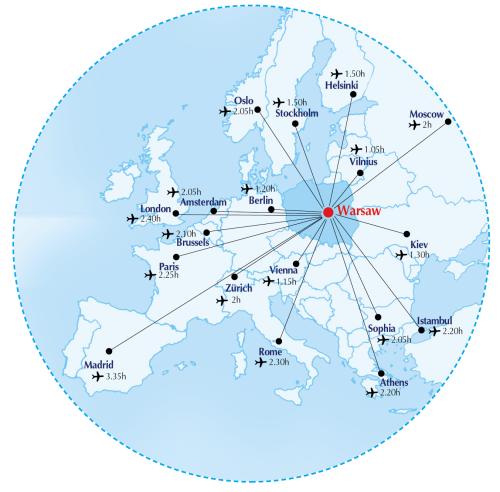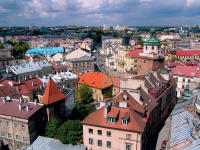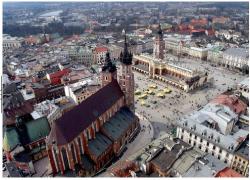Why poland ?
Poland is a fascinating country that serves as the geographical and cultural crossroads of Eastern and Western Europe. Located at the center of the Northern European plain, Poland has been a nation of survivors since the foundation of the first Polish state more than 1000 years ago. Through its turbulent history its people have managed to maintain their identity, and today, the country enjoys a crucial position as the largest of the former Eastern European states and the most populous new member of the European Union.

On the 21 December 2007 Poland joined The Schengen Area. As a result passport checks are abolished on Poland's borders to Germany, Slovakia, Czech Republic and Lithuania. It practically means that persons admitted to the Schengen Area can travel hassle-free between 24 countries of the Schengen Area without internal land and sea border controls, from Portugal to Poland and from Greece to Finland.
- Thanks to its location, Poland occupies a special place in European Union. Poland's border on the river Bug became the EU's eastern border. In the wider geographical and geopolitical sense Poland occupies a central position. More and more foreign investment from Western Europe is to be shifted to Poland, as well as from the US and Asia. Poland's geographic location facilitates the logistics activities and forecasts indicate an increase in the number of immigrants to the country.
- Polish institutions of higher education are participating to international student exchange programmes like Socrates / Erasmus and engaging in bilateral agreements an individual exchange programmes pursued by particular schools. All these initiatives enhance the development of relations between Polish and foreign institutions of higher education. The number of Polish institutions of higher education awarded an Erasmus University Charter is approaching 200 and the mobility of Polish students is growing rapidly.
 Poland, the largest country among the newest members of the European Union has one of Europe's youngest populations - half of its citizens are less than 35 years old. Out of nearly 39 million Poles almost 2 million are university students
Poland, the largest country among the newest members of the European Union has one of Europe's youngest populations - half of its citizens are less than 35 years old. Out of nearly 39 million Poles almost 2 million are university students
- Poland's education market has been the most dynamically developing one in Europe during the last ten years. The number of higher education institutions has increased five fold while the number of students quadrupled. Each year almost half a million young people begin their education at universities and colleges.
- Polish academic traditions reach back to 14th century, some of the Europe's oldest universities can be found here. The Jagiellonian University of Cracow was established in 1364. Nicholas Copernicus and Marie Skłodowska-Curie are among great names of Polish scientists known and admired worldwide.
- Today's Polish universities continue the glorious traditions of their predecessors. Warsaw University is ranked first in the Top Coder international IT ranking, it outperformed such great institutions as the Massachusetts Institute of Technology. A representative of Poland also leads the Top Coder individual ranking.
- Polish universities offer high quality studies and are an integral part of the European education space. All leading universities offer programmes thought in English, these include medicine, engineering, humanities, business and finance. Poland takes active part in the Bolonia Process. Thanks to the ECTS (European Credit Transfer System) students can be fully mobile, and continue education in other countries.
- Universities have some special offices to take care of the needs of every international student. Specially assigned Polish students help newcomers to adjust to their new environment.
- Phenomenon unique to Poland's education market is the large share of it in the hands of private institutions of higher education. The composition of the Polish market is comparable to that in the USA. There are now about 310 privately owned universities and colleges in Poland and 138 state schools of higher learning. Thanks to high level of competition the cost of studying is lower than in other European countries.
 Students who decide to study in Poland in English can do so at one of more than 100 institutions. These include universities, technical universities, higher schools of engineering, agricultural academies, academies of economics and numerous other higher vocational colleges and teacher training colleges. HEI's in Poland emphasize the application of scientific knowledge for future professional needs. Strong focus is placed on fundamental and applied research, as well as on creative and artistic work.
Students who decide to study in Poland in English can do so at one of more than 100 institutions. These include universities, technical universities, higher schools of engineering, agricultural academies, academies of economics and numerous other higher vocational colleges and teacher training colleges. HEI's in Poland emphasize the application of scientific knowledge for future professional needs. Strong focus is placed on fundamental and applied research, as well as on creative and artistic work.
- Nicolaus Copernicus (1473-1543) who as the first in modern times developed a heliocentric theory of the Solar System and Maria Skłodowska-Curie who discovered polonium and radium in 1898 are the world-famous Polish scientists. Nowadays Polish scientist are responsible for such break-troughs in science as: discovery of the practical implementation of blue laser, the design of the technology for the manufacture of the smallest synthetic diamonds in the world, construction of an artificial heart or designing nano-cristals for the purpose of 3G mobile telephony system. Aleksander Wolszczan, Polish astronomer graduate of the Nicolaus Copernicus University in Toruń, was the first to prove the existence of a planetary system in the Universe outside of our Solar System.
- Studying in Poland offers a wonderful opportunity to get to know the rich culture of the country, to see splendid historical monuments and to enjoy some of Europe's largest and most unspoilt natural habitats. Thirteen sites in Poland have been put on the UNESCO list of World Heritage Sites. One of them, the Białowieża Forest, is the biggest naturally afforested area in Europe and the last remaining section of primeval forest, with some species of flora and fauna unmatched anywhere else in Europe. It's, for example, the habitat of the European bison, the continent's largest mammal. Another UNESCO site which arouses excitement and admiration is Malbork Castle, erstwhile headquarters of the Teutonic Order and the largest Gothic fortress in Europe. Also Wieliczka Salt Mine, the world’s oldest commercial enterprise still in business, became a destination for tourists from all over the world. Today’s mine is a labyrinth of corridors and chambers 350 km long, 2 km of which are accessible to visitors.
0 comments:
Post a Comment